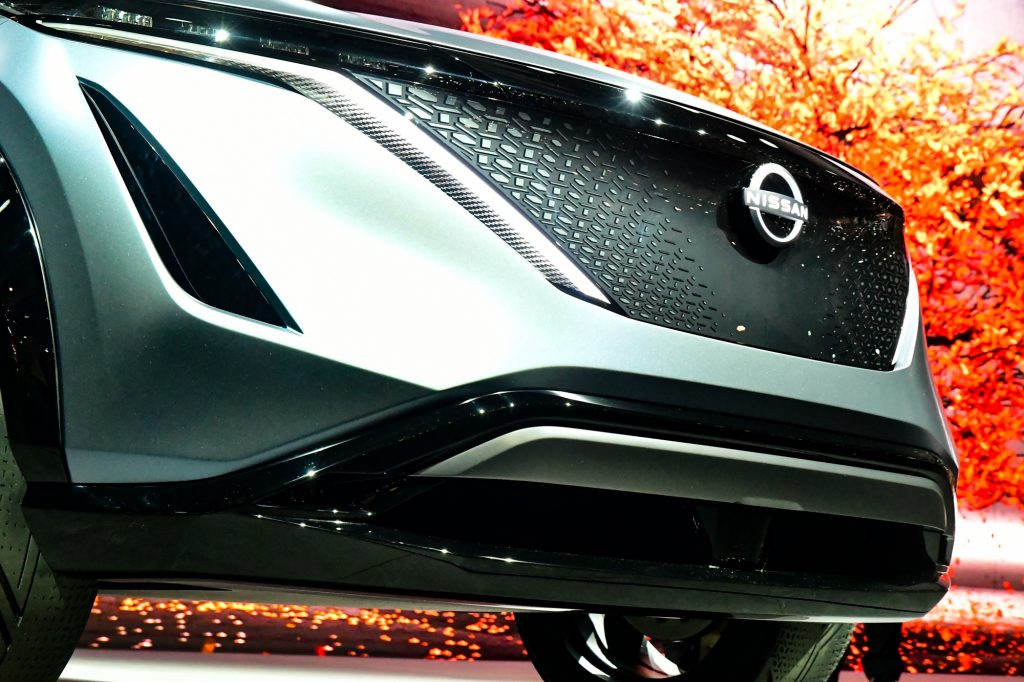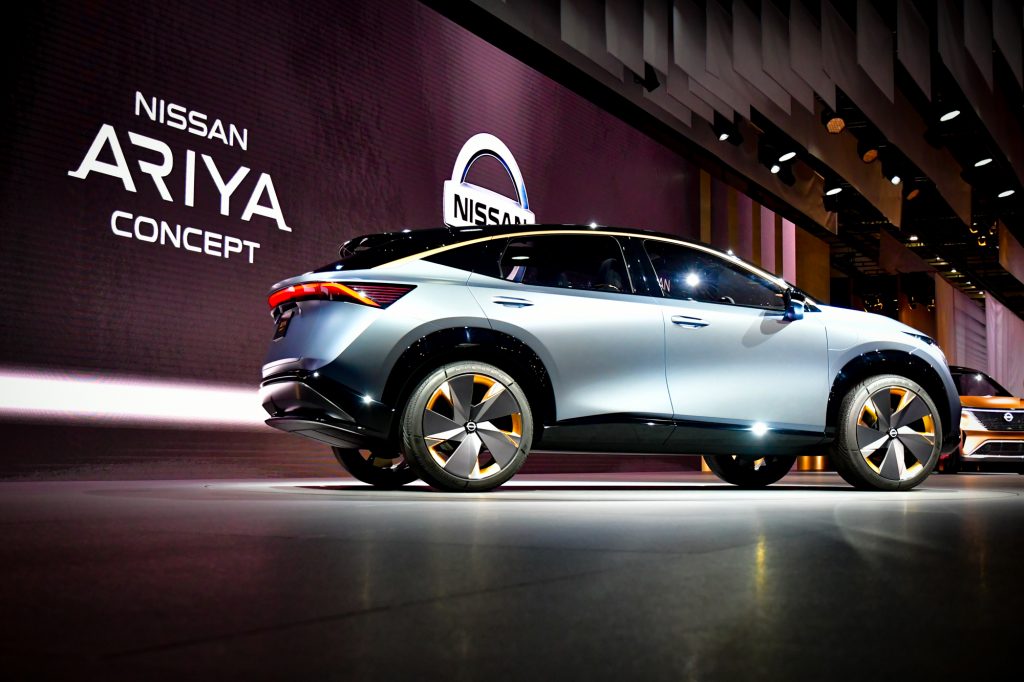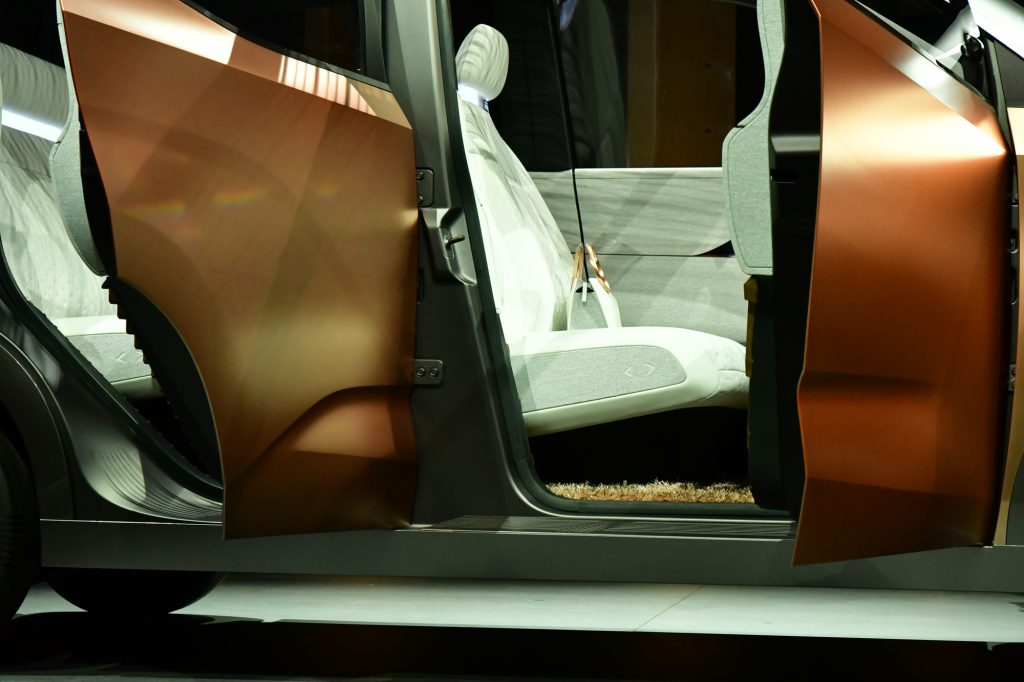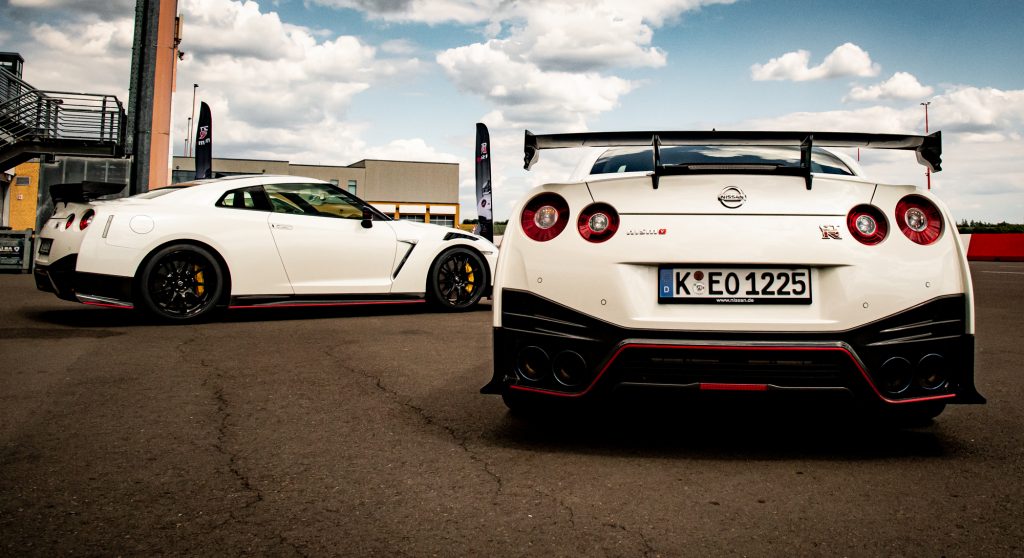Nissan’s Future-Focused Ariya and IMk Concept Cars
A pair of electric vehicles previewed at the Tokyo Motor Show signal a new direction for the company

In the past, Giovanny Arroba assisted in designing cars as totemic for Nissan as the Altima. Today, he’s a program design director at Nissan, and admits he’s experiencing a pretty special rebirth. Speaking with us at the Tokyo Motor Show about Nissan’s new electric Ariya and (sadly, Japan-market-only) IMk Concepts, he says this sector, for carmakers, feels tremendously freeing. For instance, he says the Ariya and IMk don’t have grilles, because they don’t need them for engine cooling. The AWD electric system in the Ariya has batteries in the floor and motors powering each axle. But cars still have “faces,” he stresses, and nobody wants a car that looks bland or static from the front.

“You know, before we had all this shiny chrome in there, even the logo. We wanted to do away with that and have something that looks electrified and just pure light,” he says. Instead of grilles, the concepts have screens. The idea is to hide a lot of the technology that’s critical for safety—like cameras, radar and laser, etc., behind the screen. But that, Arroba explains, means that the front of the car suddenly doubles as a display. It doesn’t have to be static. “And if you notice on the grill, there’s this lattice pattern that’s kind of a little Japanese DNA interwoven,” he explains.

On the interior, the door panels repeat this pattern and are also backlit. This goes far beyond the footwell or “puddle” lighting you see today, and Arroba says though it’s impossible to let light pass through the doors of a car, the intention is to invoke the backlighting of a sunlit traditional Japanese home, where papery shoji screens let light leak through in glowing translucence. Most of the surfaces are also completely seamless, with what Arroba calls “coffee-table-like surfaces.” Plus, every “button” is no longer mechanical, but haptic. Touch a switch and you feel a mild pulse through your fingertip.
Alfonso Albaisa, senior vice president for global design for Nissan, says that one huge underused function is communicating directly through design—conveying the capabilities and functions of cars without needing an instruction manual. The American Automobile Association recently reported that pedestrian detection tech in newer cars works poorly at night, but that customers weren’t well aware of this weakness and were thus relying too much on technology to save them from the curse of driver distraction. Albaisa says, “It’s a vicious cycle. Right when there is more safety technology there are suddenly 2,000 [other] apps available.”

Neither design expert claims knowledge of an easy solution, but like communicating how a gearshift works, carmakers, Albaisa says, have to learn how to signal function and capability intuitively—and also how to signal the limits of technology.
As for the exterior, Arroba noted that Ariya isn’t an idyllic concept, but does represent a turn in Nissan design. As such, he pushed for his team of designers to employ sharp edges, but he stresses that’s not about purposeless show, but a few, direct, clear lines. “We have this idea at Nissan called timeless futurism,” he says. Arroba admits that this sounds anachronistic. “There’s a tension in there, but ultimately it’s about the elimination of the inessential. Pure things have a longer lifespan.”

As for the IMk, Arroba notes that in Japan one of the most popular cars is the tiny Kei model, which is really meant as an urban runabout. But they’re not EVs—yet. Arroba says small cars are too frequently unfashionable, and adds that it’s key that carmakers turn away from a philosophy where inexpensive cars cheat owners out of a premium vibe or feel.

The IMk also has a grille that’s more of a display, again with safety tech built in behind the screen, and the driving position relatively high, for a better outward view. Like the Ariya, the cabin was entirely decluttered, with a completely flat floor and a less visual distraction. Like the Ariya, the dash is split-level, with a long, tilted shelf-like plane that spans the cabin—and echoes, gently, the sloped shoulder line on the exterior of both cars. Fabrics look high-end, and there’s a total lack of plastic “sheen” that can easily cheapen the aesthetic.

Arroba says that even though the IMk won’t be available for US customers, it, like the Ariya, does signal a significant new design direction for the brand worldwide, and that includes hybrids and electrics. He says Nissans, going forward, both inside and out, are going to look entirely clean. “We’re moving away from lots of slashes and cuts and styling noise,” Albaisa explains. “It’s harder than you think. It’s an effort at completeness, without complexity.”
Hero image courtesy of Nissan












